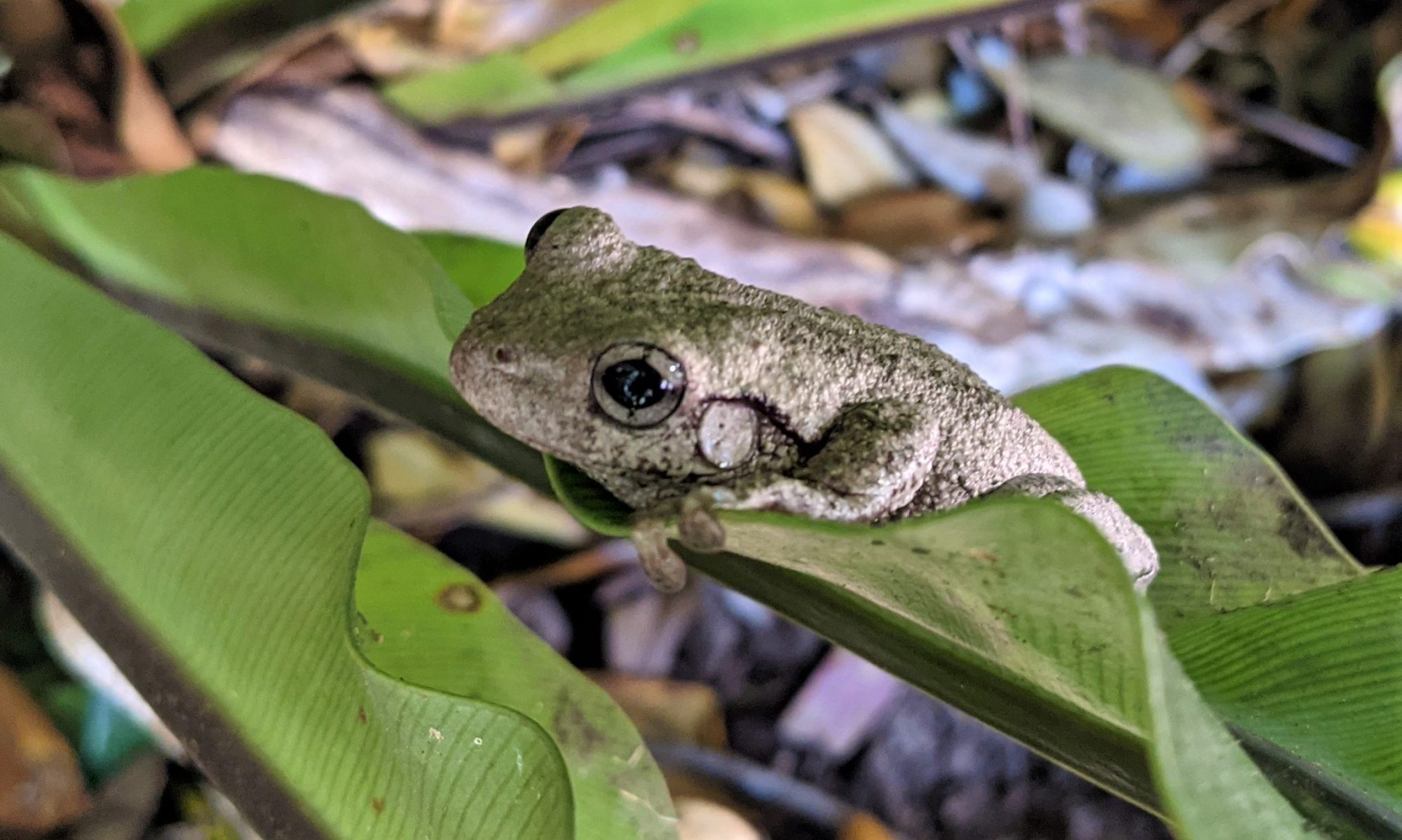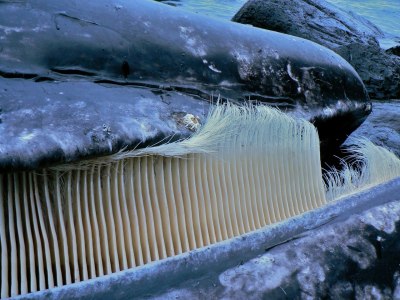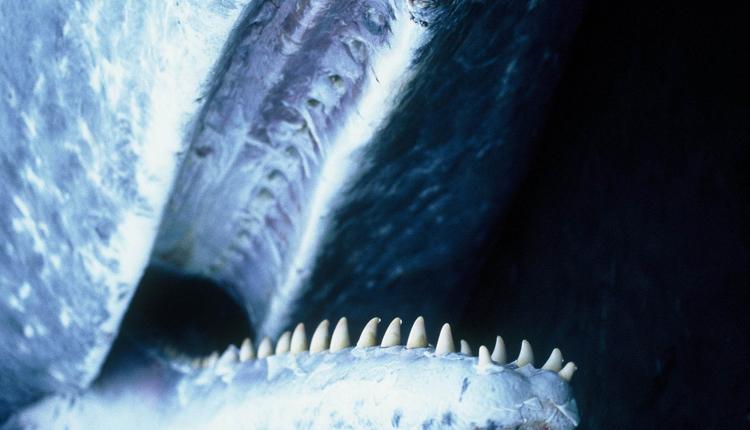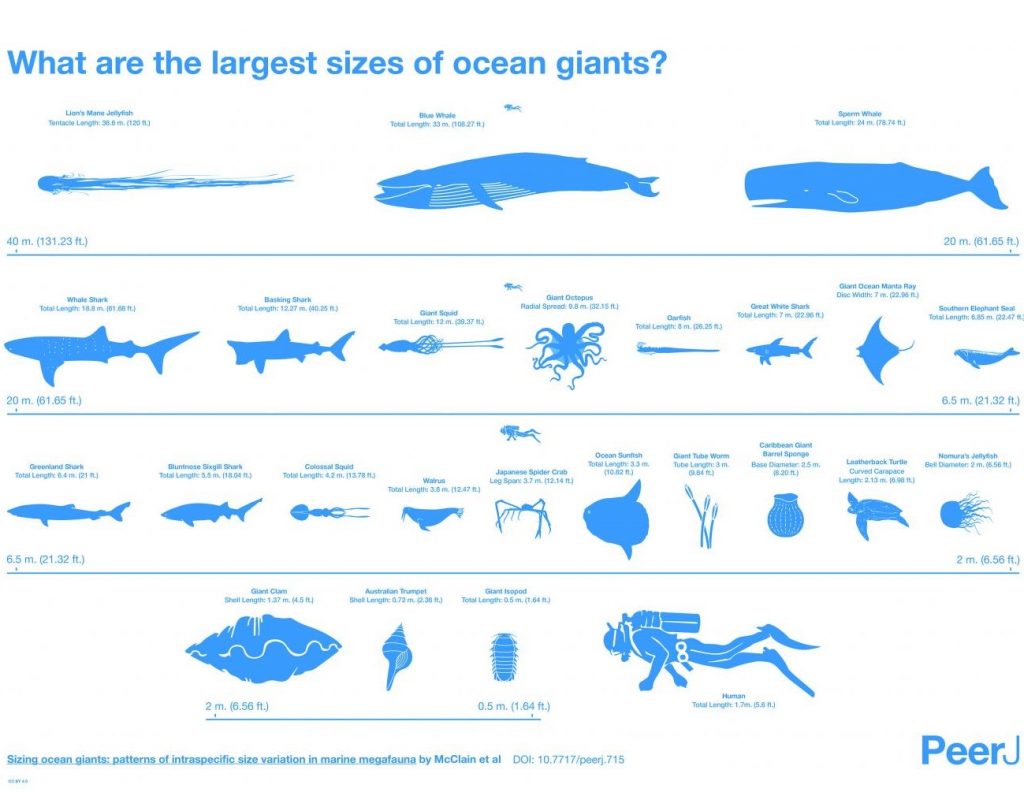Explore the amazing diversity of Marine Life. Take a journey beneath the waves to explore this wonderful world. Learn about some of these incredible animals, their adaptions and habitats with the resources below.
Oceans contain the greatest diversity of life on Earth. Habitats range from the freezing polar regions to the warm waters of the coral reefs, deep sea hydrothermal vents to shallow seagrass beds and beautiful sponge gardens to giant kelp forests, marine organisms are found everywhere.
The ocean starts at the high tide line down to the deep see trenches. The average depth of the ocean is 3,688 meters and the deepest trench is 10,994 meters .
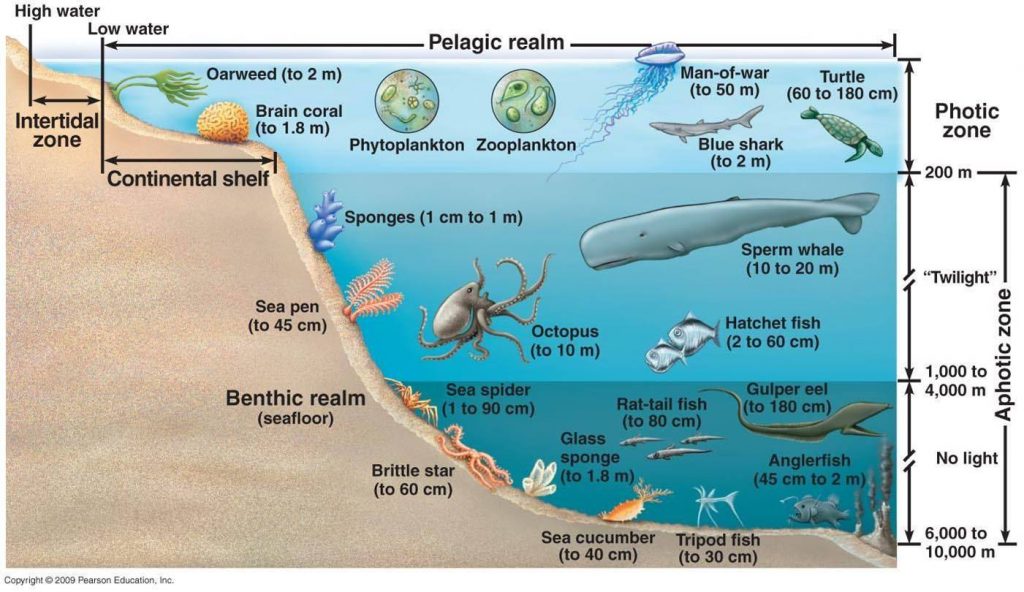
Sunlight only reaches as far as 200 m down in the ocean. Below this depth plants cannot survive. The deeper you go in the ocean, the darker and colder it gets and the higher the pressure gets.
Very little is known about the amazing creatures that live in the depths of our oceans.
Blue Whales
The greatest dive depth reported from tagged blue whales was 315 meters. The deepest confirmed dive from a pygmy Blue Whale 506 m.
Baleen is a filter-feeding system inside the mouths of baleen whales. The whale opens its mouth underwater then pushes the water out. Animals such as krill are filtered by the baleen and remain as a food source for the whale.
Right: Sperm Whale, Toothed Whales
Toothed whales have jaws with teeth and only a single blowhole. Toothed whales are smaller than baleen whales. They occur in a wide range of marine and freshwater habitats, from the Arctic to the tropics and some species live in large river systems such as the Amazon, Ganges, Indus and Yangtze. They rely on air to breathe and some, such as the sperm whale, can hold their breath for over one hour and dive several thousand metres deep to find and capture prey. All the members of this group are very vocal, using sound to identify themselves, to communicate and to echolocate.
Awesome Cephalopod
Weird and the Wonderful
Isopod
This is a parasitic crustacean that lives inside the mouths of fishes. They eat the tongue and then become the host’s tongue. Very weird animal, find out more with the National Geographic.
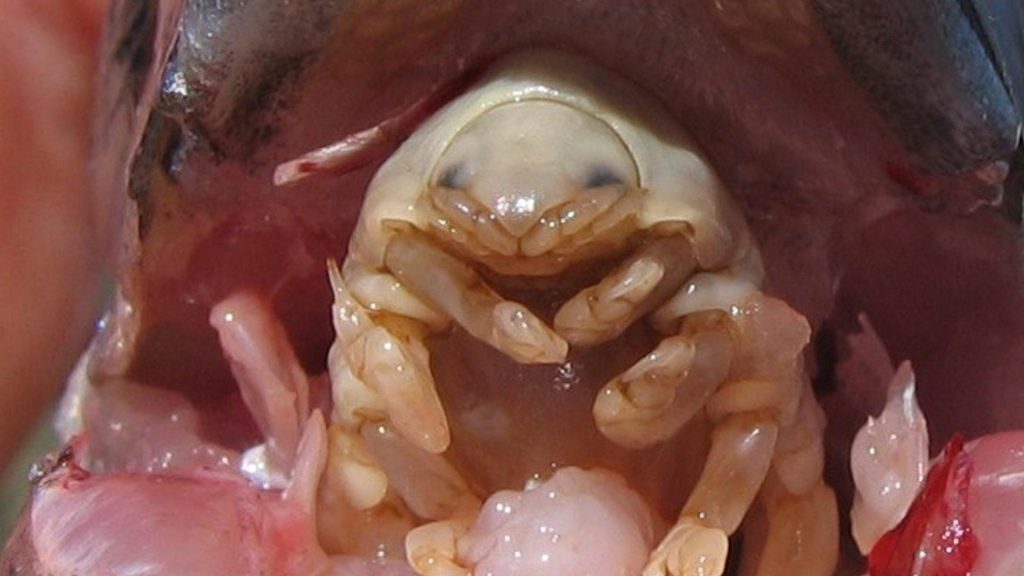
Measure out some of these Marvellous Marine Animals
- Japanese Spider Crab = 3.8 metres
- Oarfish = 15 metres
- Largest Giant squid ever found = 18 metres
- Ocean Sunfish, fin to fin = 4.2 metres
- Sperm Whale = 19 metres
- Blue Whale = 30 metres
Find out more with Australian Environmental Education
- Sydney’s Hidden Gardens
- My Dive with Sharks
- Beachcombing – exploring our shores
- Penguin Awareness Day
- World Jellyfish Day
- World Octopus Day
Find more great videos and resources:

